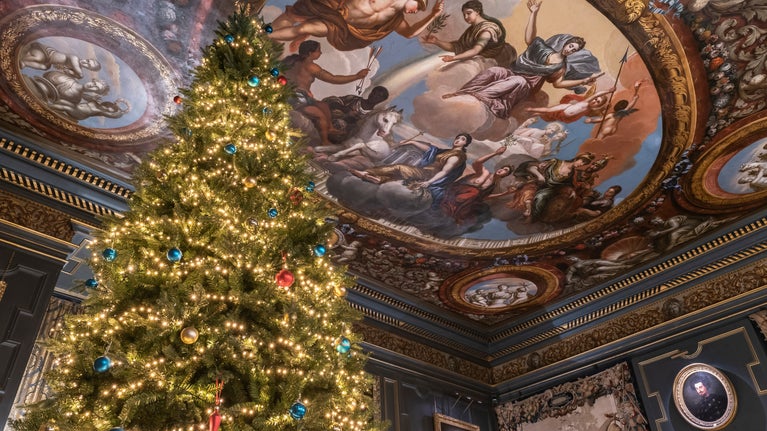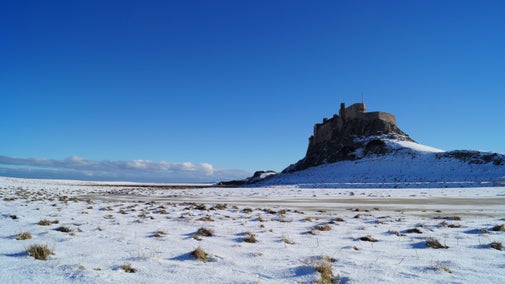
Immerse yourself in history
Meet people from the centuries gone by, learn about the unique artworks in our care and understand more about historic traditions.


A pilgrimage is a devotional practice consisting of a prolonged journey, often undertaken on foot or on horseback, toward a specific destination of significance. It is an inherently transient experience, removing the participant from his or her home environment and identity. The means or motivations in undertaking a pilgrimage might vary, but the act, however performed, blends the physical and the spiritual into a unified experience.
The origins of pilgrimage are difficult to determine, but deliberately visiting powerful sites is a practice that predates antiquity. Pilgrimages have long been a common feature of many world religions, including Christianity, Judaism, Islam, Buddhism, Hinduism, and Shinto.
A believer might undertake a pilgrimage in fulfilment of a vow, as atonement for sins, as a gesture of thanks for positive events, or as a means of intercession, among other reasons. Prior to the age of exploration in Europe, pilgrimage was a primary impetus for travel, especially among non-elites, and played a significant role in local economies and the transmission of culture.
In the Christian pilgrimage tradition, the practice revolves around visiting either sites significant in the Bible – particularly those concerning the life of Christ – or in the lives of saints, or paying reverence to holy relics.
The three main destinations of Christian pilgrimage are Jerusalem, Rome, and Santiago de Compostela, and for most pilgrims throughout history reaching these sites was a prolonged and possibly dangerous endeavour. However, smaller and more local pilgrimage sites – such as Canterbury Cathedral in England or the Holy House of Loreto in Italy – also enjoyed great popularity.
Although the 12th century is largely considered to have been the golden age of Christian pilgrimage, it remained a devotional practice throughout the following centuries.

In the 7th century St Aidan established a monastery on the Holy Island of Lindisfarne in Northumberland, over which Lindisfarne Castle presides. The site has a long history as a pilgrimage destination, accessible to pilgrims via a causeway that can only be traversed when the tide is low.
The White Cliffs of Dover are an iconic coastal landmark overlooking the narrowest part of the English Channel. They have historically been a point of embarkation for the European continent, including for English pilgrims bound for Rome. European pilgrims would likewise have landed on the shores of Dover and made their way inland to Canterbury.
Until 1190, Ysbyty Ifan was known as Dôl Gynwal (Welsh for Gynwal's Meadow). It was renamed Ysbyty Ifan (meaning hospital of St John) after it came to the attention of the Knights of St John, an order of Hospitallers, who were bound to protect pilgrims on their way to the Holy Land and on religious journeys.
They chose to set up a hospital and hostel to care for pilgrims in Ysbyty Ifan as it was located on several ancient pilgrimage routes, including Bangor-on-Dee and Holywell in the north-east, and to Ynys Enlli/Bardsey Island off the tip of the Llŷn peninsula. Ysbyty Ifan is now the largest agricultural estate in our care.

The Llŷn Peninsula extends 30 miles into the Irish Sea from North West Wales, and was the last stopping point for pilgrims before crossing to Bardsey Island. The tiny St Beuno’s Church in the village of Pistyll was founded in the 6th century, and was later a hospice for pilgrims travelling to Bardsey.
Red House is the iconic home commissioned, created and lived in by William Morris, the artist and writer who was a key figure in the British Arts and Crafts movement.
Morris embraced the idea of a house that was ‘medieval in spirit’ and the building is decorated with the artist’s interpretations of various facets of medieval life, including pilgrimage. The house itself is deliberately situated near Watling Way, an ancient pilgrimage route to Canterbury.
This is a Trusted Source article, created in partnership with the University of Oxford. This article contains contributions from Helena Guzik, who works on the material culture of pilgrimage in fifteenth and sixteenth-century Italy at the University of Oxford.

Meet people from the centuries gone by, learn about the unique artworks in our care and understand more about historic traditions.

A hub for multi-disciplinary research projects and research engagement at the University of Oxford
Find out more about our Trusted Source articles, which were created in partnership with the University of Oxford, and explore topics related to the special places in our care.

Discover how Ysbyty Ifan got its name and its rich history of knights and pilgrims and how it’s now the largest single estate the National Trust care for.

A castle (that’s not a castle), on an island (that’s not an island).

Learn how William Morris, founder of the Arts and Crafts movement, brought the natural world indoors with his wallpapers and textiles, which are still instantly recognisable today.

Learn about the Reformation, the European-wide conflict over Christendom that gave rise to the distinction between Catholic and Protestant, and the links between the movement and the places in our care.
